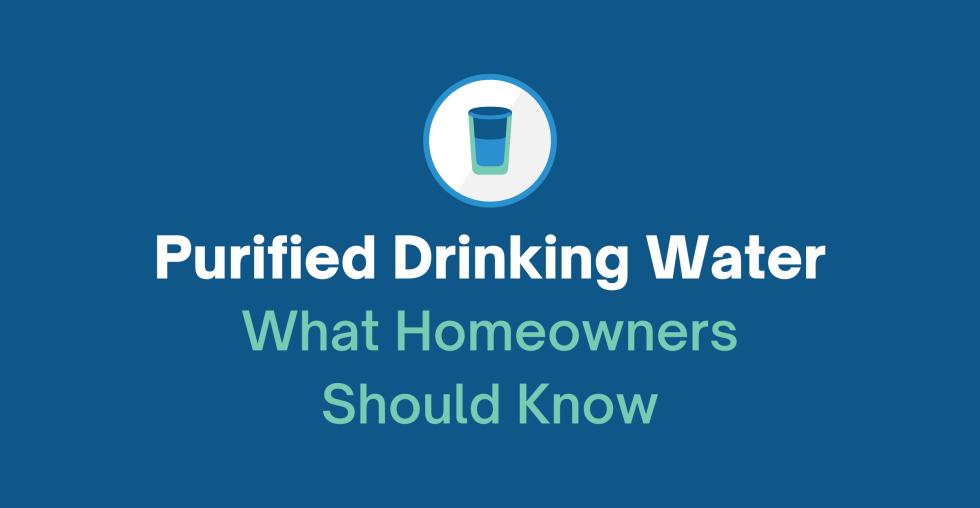Purified Drinking Water - What Homeowners Should Know

Water in the Home
When considering drinking water purification, it’s important to look at the whole picture, including purification or filtration method, water contaminants, and water source.
The water that supplies your home is more complicated than you might think. Not only is the water chemistry complicated, but also the path that water has taken to end up out of your faucet.
From the primary water source of either surface (river or lake) or groundwater (well), the municipal water company sends the water through multiple stages of filtration and disinfection which is then pressurized and sent to your home.
Since this water is collected, filtered, and distributed at a large scale, it is understandable that the water should be purified further upon entry of the home.
Drinking Water
Water that is consumed should be of more concern than water that is simply used to wash dishes or bathe in (although that is important too). Contaminants in the water that are consumed can be toxic and unhealthy.
Remember that drinking water includes water that is used in cooking and other water-based drinks such as coffee and tea. This is important to remember while deciding on a drinking water purification system.
Water Contaminants
There is a wide variety of water contaminants that one should be concerned about, this includes heavy metals, inorganics, pharmaceuticals, pesticides, algaecides, disinfectants, radiological contaminants, and other contaminants and chemicals.
Having a purification system at the home ensures the removal of these contaminants.
Reverse Osmosis
The highest quality of water purification available for residential use is reverse osmosis (distillation also purifies at a very high level but is not as practical). There have been many tests done with reverse osmosis and it continues to deliver high-quality water.
Reverse osmosis is also scalable, it works with small homes and all the way up to large homes with high water demands.
Integrating Reverse Osmosis in the Home
Sometimes when people are considering reverse osmosis, they think it must be stored underneath the sink, and that is not the case!
Often, reverse osmosis systems can be placed in a basement, garage, crawlspace, or mechanical room accompanied with running purified water lines to the desired locations.
These locations can include the kitchen sink, ice machine, wet bar, outdoor kitchen, master bathroom, and more!
Ready to Take Control of Your Water Supply?
Don’t wait for water shortages or unreliable sources to disrupt your life. With our Rainwater Harvesting systems, you can enjoy a sustainable, reliable, and completely self-sufficient water solution tailored to your home’s needs.

